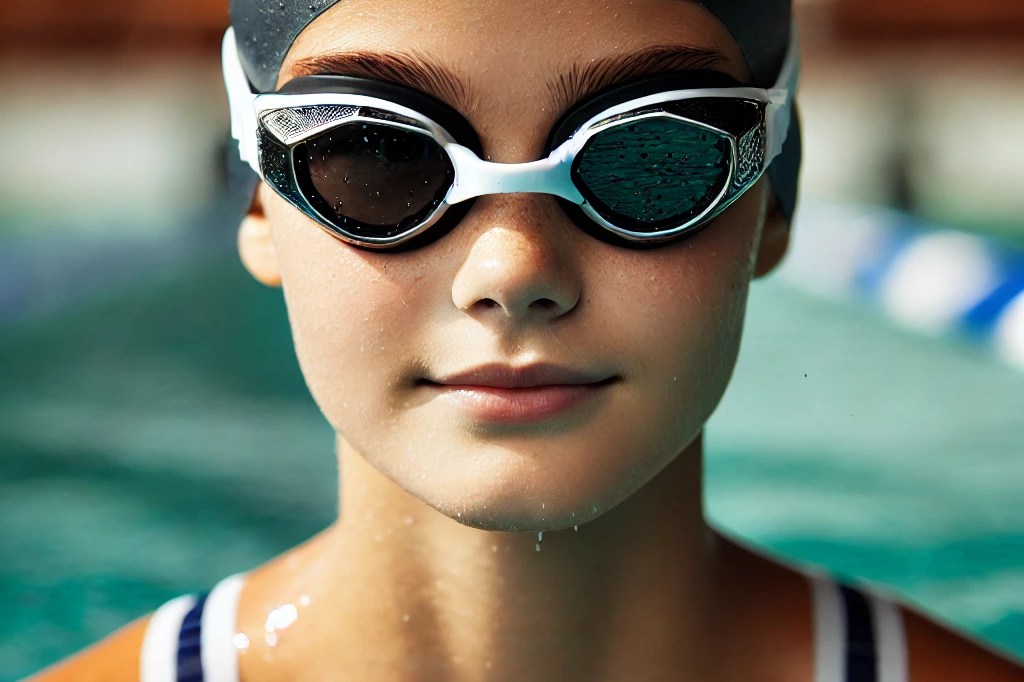
Exercise is vital for maintaining overall health and well-being. For individuals with low vision, finding safe and enjoyable physical activities can be a challenge, but it is entirely possible with the right guidance and adaptations. This article explores various exercise options for people with low vision, offering practical tips to ensure safety and maximize benefits.
Understanding Low Vision and Exercises to Avoid
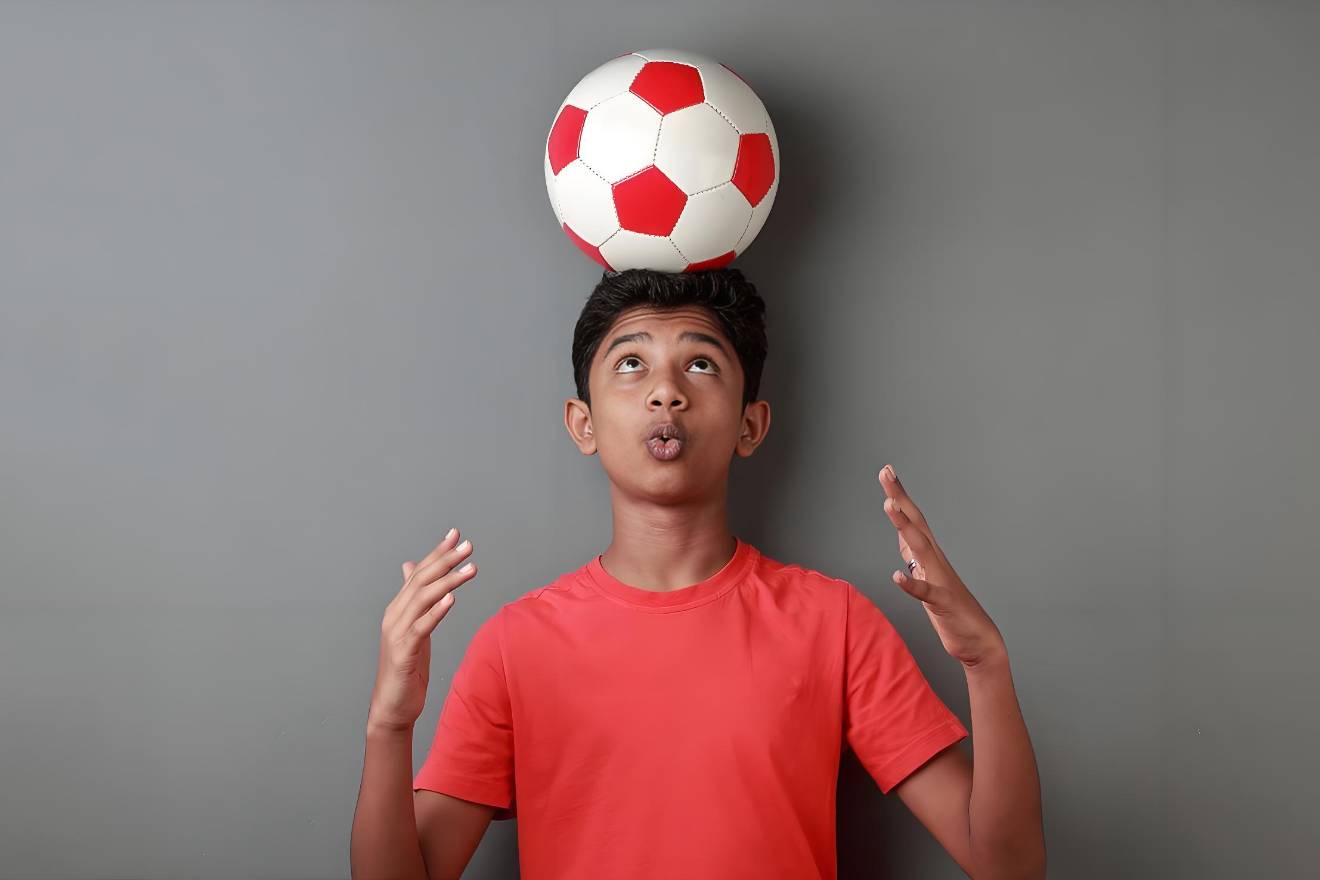
Low vision is a significant visual impairment that cannot be corrected with standard glasses, contact lenses, medication, or surgery. People with low vision may experience difficulty in seeing details, distinguishing colors, and navigating through different environments. Avoiding high-risk activities can help prevent accidents and injuries. Although sports like basketball, table tennis, tennis, and football can train your reaction time and quick coordination of eye and eye muscles, they can also pose risks of falls and collisions if your vision is poor (American Foundation for the Blind, 2021).
High-Risk Exercises to Avoid
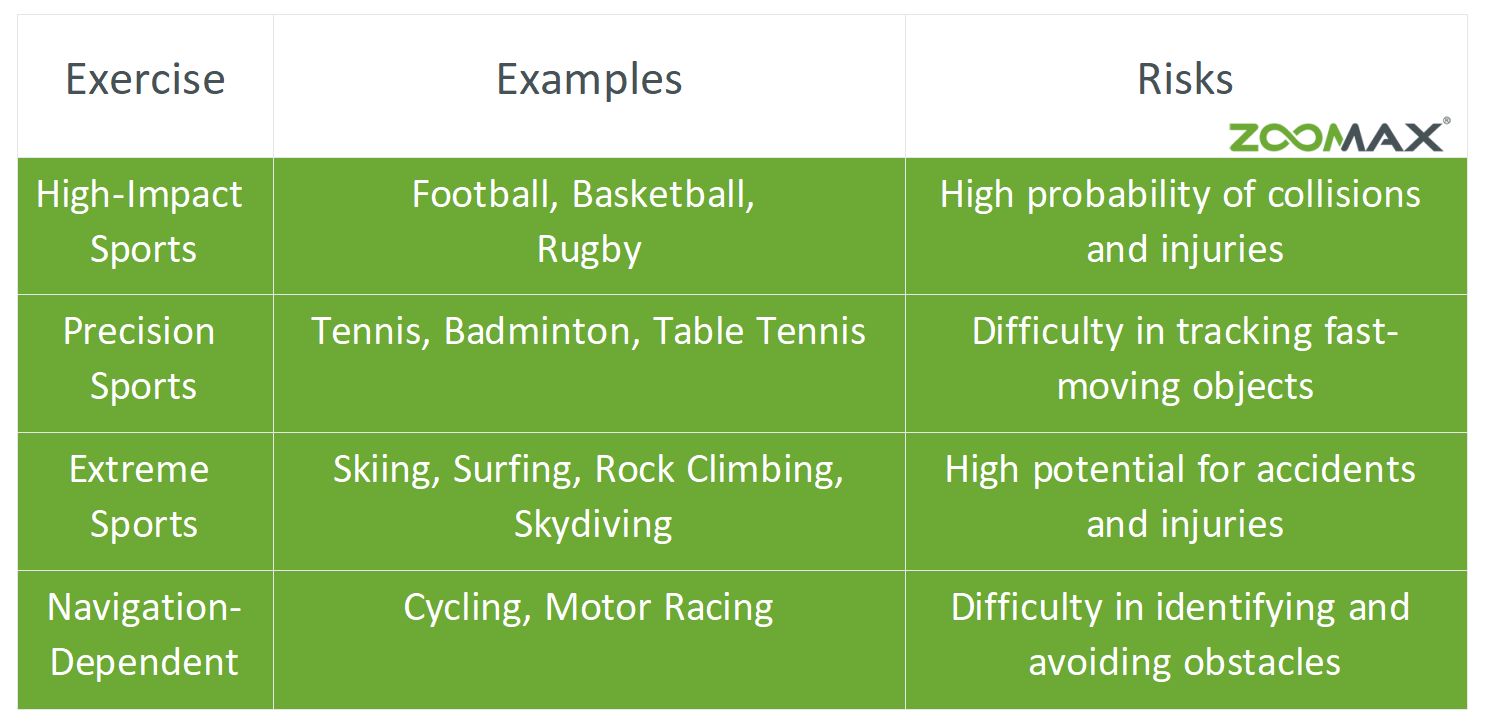
By being aware of the risks associated with certain exercises, individuals with low vision can make safer choices. It is essential to choose activities that minimize the risk of injury and are easily adaptable to their needs.
Recommended Exercises for Low Vision
Many exercises are well-suited for individuals with low vision, offering numerous physical and mental health benefits. These activities are typically low-impact, easy to modify, and can be performed in safe environments. low vision individuals can benefit from activities like swimming, tai chi, walking and running with a sighted guide. These exercises not only enhance muscle strength but also improve mental health and environmental awareness, reducing stress and enhancing overall well-being (Vision Center 2023). Below is a description table of recommended exercises.
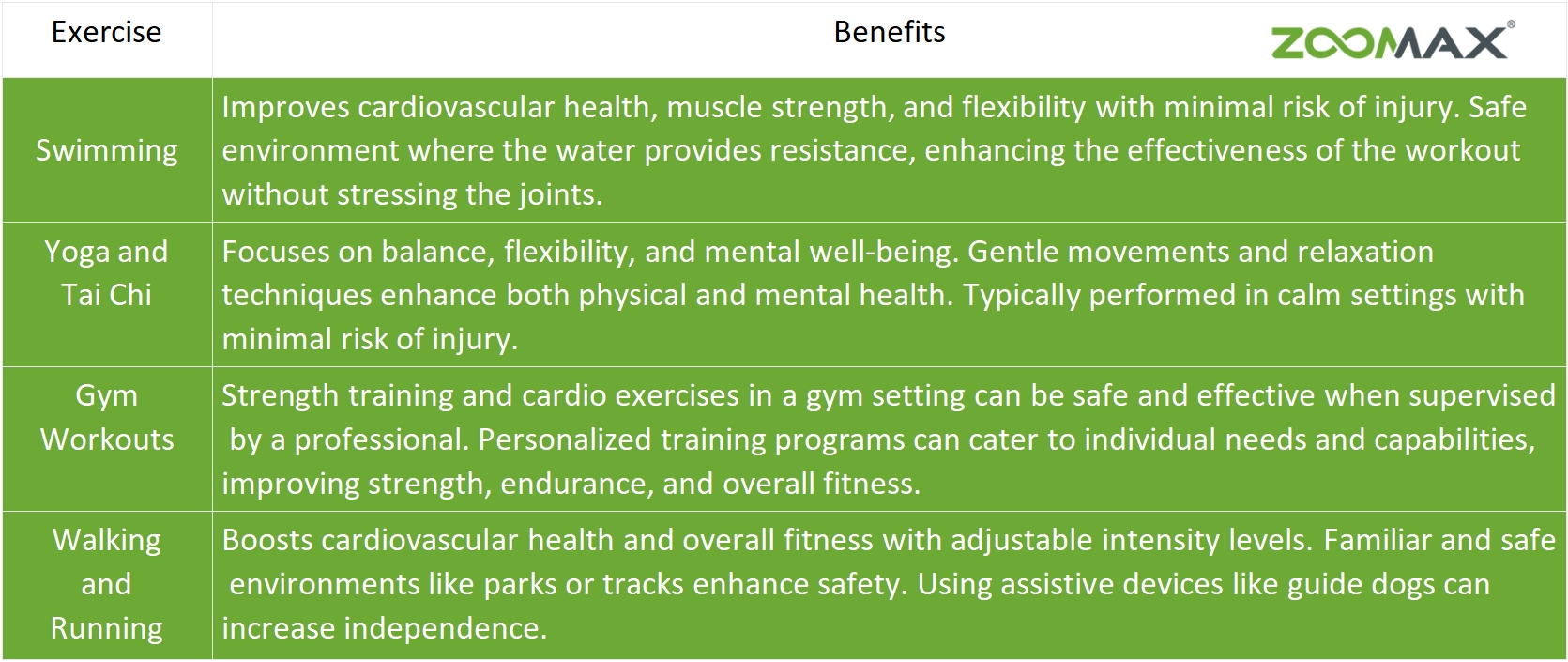
An observational study reported that 44% to 50% of patients participating in low vision rehabilitation training showed significant clinical differences in overall visual ability. This indicates that vision rehabilitation training combined with appropriate physical activity can significantly improve the visual function and quality of life of low vision patients (JAMA Network, 2023).
Notably, research shows swimming, running with a sighted guide can enhance the physical and mental health of individuals with low vision. These activities not only improve overall fitness but also help in maintaining and potentially enhancing the visual field through better blood flow and reduced intraocular pressure, which can indirectly support clearer vision (The Ability Toolbox, 2023). However, because each individual’s degree of low vision varies, extra caution is necessary to avoid exercise-related accidents. If any discomfort is experienced, it is recommended to seek guidance from a coach and a doctor before continuing with such activities.
Safe and Beneficial Exercises
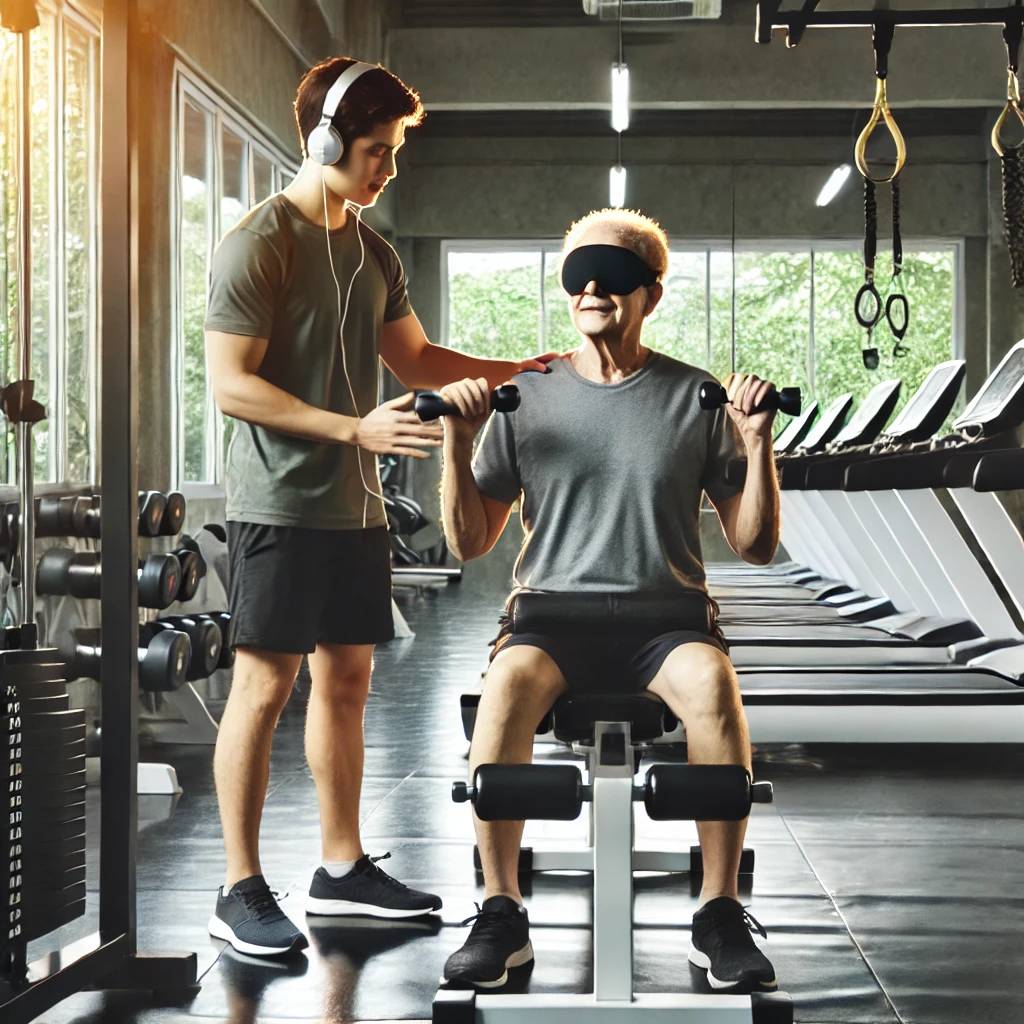 Choosing the right exercises can significantly improve the quality of life for individuals with low vision. These activities not only enhance physical health but also boost mental well-being, providing a holistic approach to fitness. Regular participation in these exercises can lead to long-term health benefits. It is important to note that each person may be suited to different types of exercise. It is best to consult with a doctor and seek advice from professional trainers to choose the most appropriate activities for one’s physical condition. Regardless of the chosen exercise, safety should always be a priority.
Choosing the right exercises can significantly improve the quality of life for individuals with low vision. These activities not only enhance physical health but also boost mental well-being, providing a holistic approach to fitness. Regular participation in these exercises can lead to long-term health benefits. It is important to note that each person may be suited to different types of exercise. It is best to consult with a doctor and seek advice from professional trainers to choose the most appropriate activities for one’s physical condition. Regardless of the chosen exercise, safety should always be a priority.
Tips for Safe Exercise
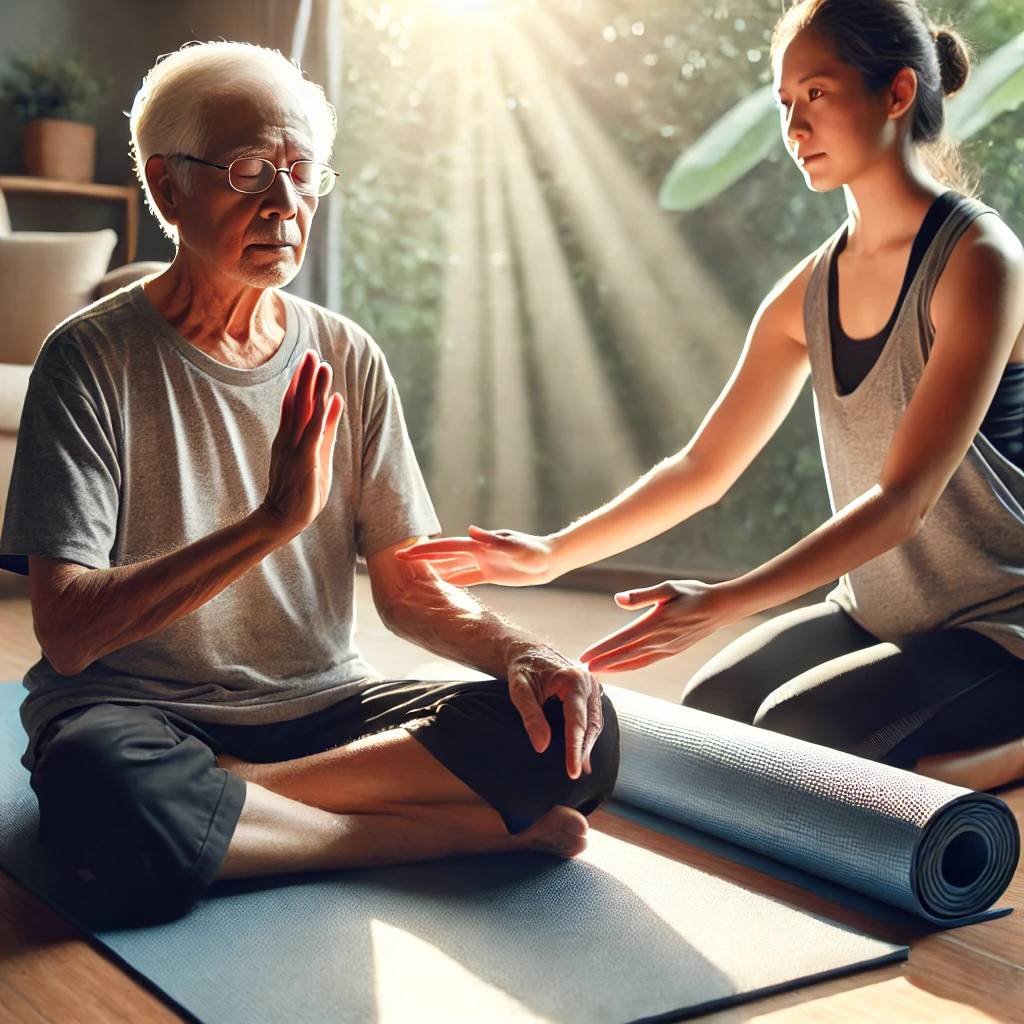 Here are some practical tips to ensure safety while exercising. Utilizing assistive devices such as canes, walkers, or guide dogs can help navigate the environment more safely. Exercising with a sighted guide or partner offers extra safety and motivation. Opting for familiar and safe environments minimizes the risk of accidents. Wearing appropriate footwear and clothing helps prevent injuries. Maintaining hydration is crucial to avoid fatigue and dehydration.
Here are some practical tips to ensure safety while exercising. Utilizing assistive devices such as canes, walkers, or guide dogs can help navigate the environment more safely. Exercising with a sighted guide or partner offers extra safety and motivation. Opting for familiar and safe environments minimizes the risk of accidents. Wearing appropriate footwear and clothing helps prevent injuries. Maintaining hydration is crucial to avoid fatigue and dehydration.
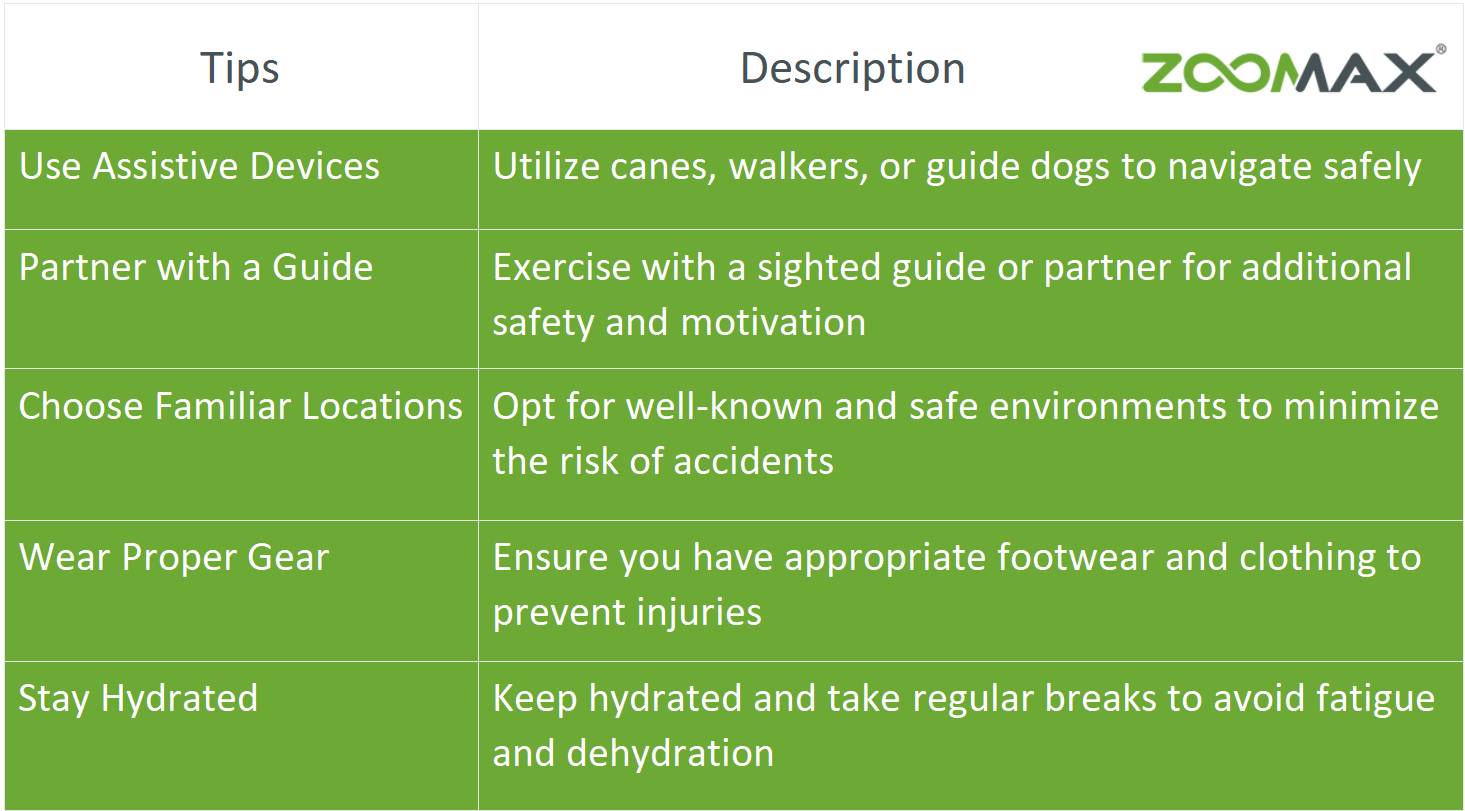
Following these tips can help individuals with low vision exercise safely and effectively. Proper preparation and awareness are key to preventing injuries and ensuring a positive exercise experience. Staying informed and cautious will make exercising both enjoyable and beneficial.
Professional Support and Assistive Technology
Orientation and mobility (O&M) training teaches individuals how to move safely and independently. Vision rehabilitation services offer personalized training and support to enhance daily living skills. Counseling services and support groups provide necessary emotional support. Assistive technology includes devices and tools that aid in daily activities and enhance the quality of life for individuals with low vision. While the American Foundation for the Blind and the National Federation of the Blind primarily serve those who are blind, they also provide valuable resources for individuals with low vision. These organizations offer information, support, and tools that can benefit anyone with visual impairments (American Foundation for the Blind, 2021; National Federation of the Blind, 2021).
Assistive Technology Options
Several categories of assistive technology can greatly improve the daily living and exercise experiences for people with low vision. These tools help bridge the gap created by visual impairments, enabling greater independence and functionality.
The Snow Series includes portable video magnifiers with Optical Character Recognition (OCR) capabilities. These devices can convert printed text to speech, making them ideal for reading newspapers, books, and other printed materials.
The Acesight VR Series offers advanced wearable devices that enhance visual clarity and allow for hands-free magnification. These devices are perfect for activities such as watching TV and navigating environments, providing a significant boost to visual accessibility.
The Luna Handheld Series consists of lightweight handheld video magnifiers that offer high-definition magnification and a user-friendly interface. These magnifiers are suitable for various activities, including reading and checking labels, making everyday tasks more manageable.
The Luna Desktop Series provides desktop magnifiers that offer hands-free magnification and enhanced visual clarity. These are ideal for a range of activities, including reading, connecting to monitors, laptops, and using smartphones, thereby improving the overall functionality and ease of daily activities.
Using assistive technology can greatly improve daily living and exercise experiences for people with low vision. These tools help bridge the gap created by visual impairments, enabling greater independence and functionality. They enhance the ability to perform everyday tasks with ease and confidence.
Conclusion
Engaging in safe and enjoyable physical activities is entirely achievable for individuals with low vision. By carefully choosing the right exercises utilizing assistive devices, and seeking professional support, people with low vision can maintain an active and healthy lifestyle. Incorporating assistive technology, such as the Snow Series, Acesight VR Series, Luna Handheld Series, and Luna Desktop Series, can further enhance independence and functionality, making daily activities more accessible and enjoyable. Following these guidelines not only promotes physical health but also improves mental well-being, ultimately enhancing the overall quality of life for individuals with low vision.
FAQ
1. What are the best exercises for people with low vision?
Some of the best exercises include swimming, yoga, Tai Chi, gym workouts, and walking. These activities are low-impact and can be easily modified for safety.
2.How often should individuals with low vision exercise, and for how long?
For optimal health benefits, individuals with low vision should aim to engage in physical activity regularly. For example, Swimming is recommended 2-3 times per week for 30-60 minutes per session, while gym workouts should be done 2-4 times per week for 45-60 minutes per session. Consistent exercise helps maintain and improve both overall and eye health by enhancing blood flow and reducing intraocular pressure (CDC, 2023; American Heart Association, 2023).
3.What precautions should low vision individuals take when exercising?
Consult a doctor, use assistive devices, and choose safe environments to prevent injuries.
References
American Foundation for the Blind. (2021). Retrieved from https://www.afb.org/
American Council on Exercise. (2021). Exercise guidelines for individuals with low vision. Retrieved from https://www.acefitness.org/
Mayo Clinic. (2019). Yoga: Fight stress and find serenity. Retrieved from https://www.mayoclinic.org/
National Federation of the Blind. (2021). Retrieved from https://www.nfb.org/
National Institutes of Health. (2020). Benefits of swimming. Retrieved from https://www.nih.gov/
Vision Center. (2023). Activities for Blind and Low-Vision People. Retrieved from Vision Center
JAMA Network. (2023). Clinically Meaningful Rehabilitation Outcomes of Low Vision Patients. Retrieved from JAMA Network
The Ability Toolbox. (2023). A Sports and Exercise Guide for People Who Are Blind or Have Low Vision. Retrieved from The Ability Toolbox
Centers for Disease Control and Prevention. (2023). Benefits of Physical Activity. Retrieved from CDC

